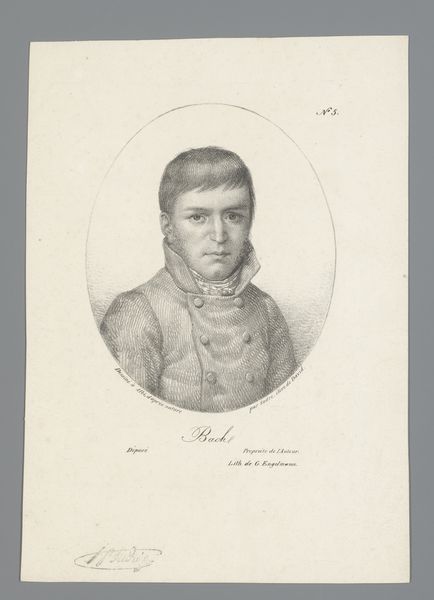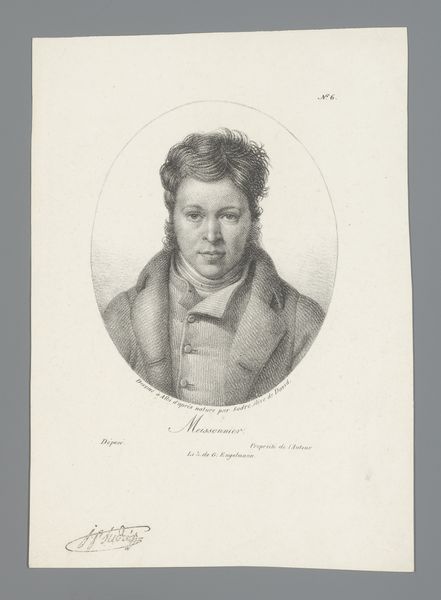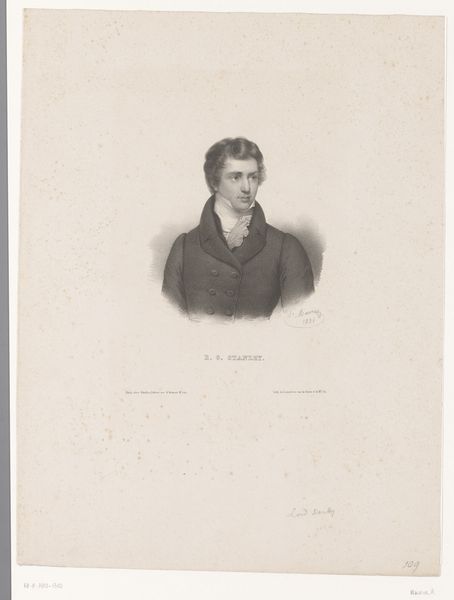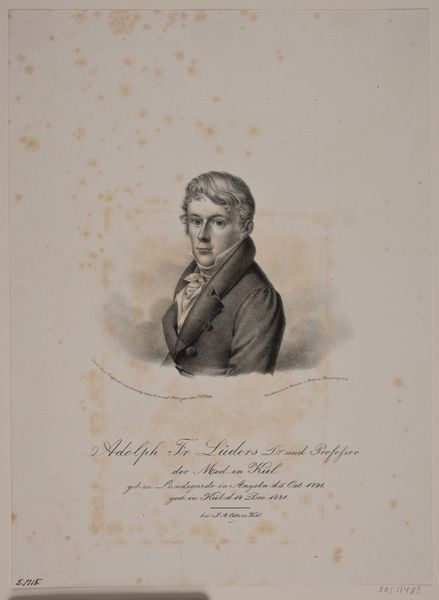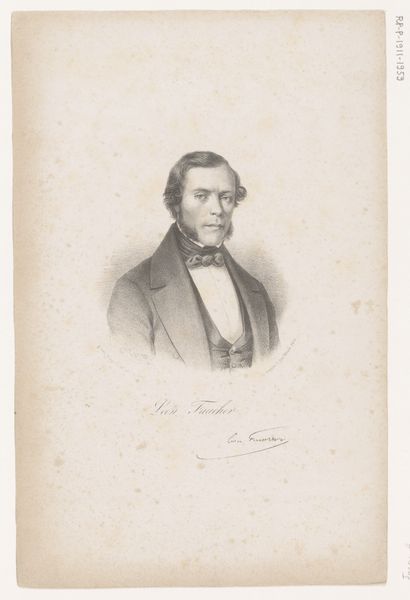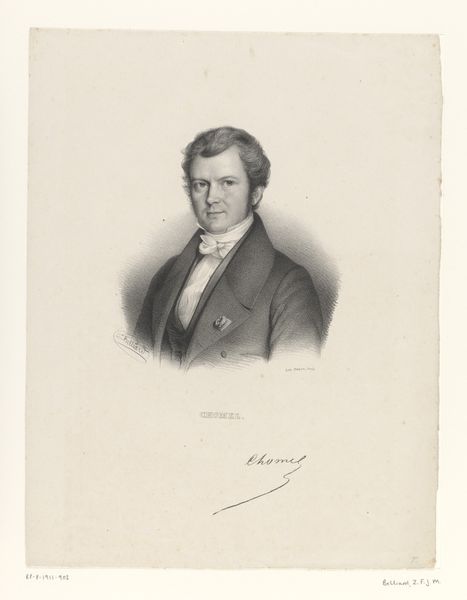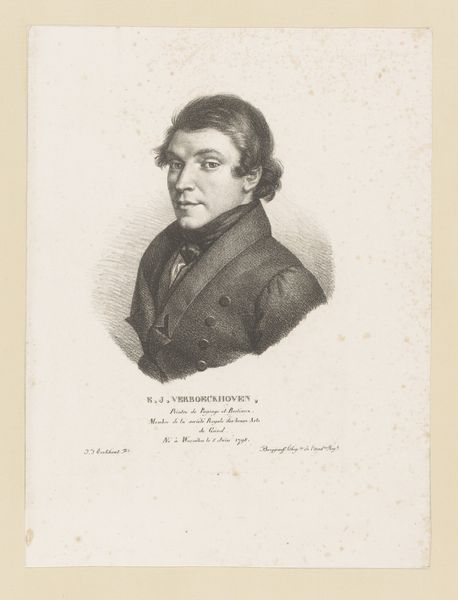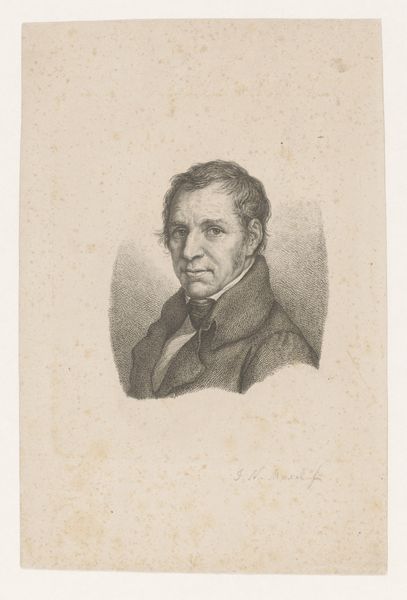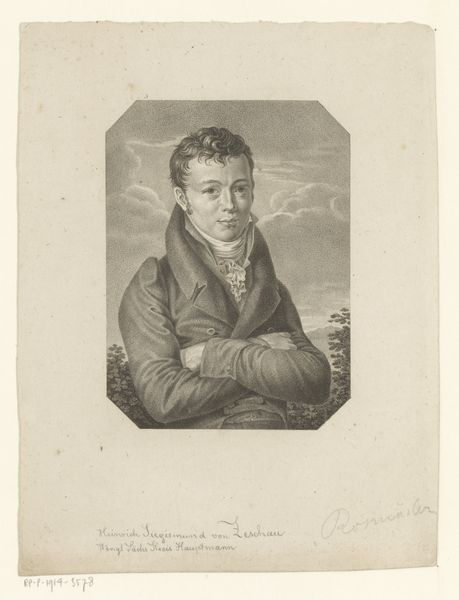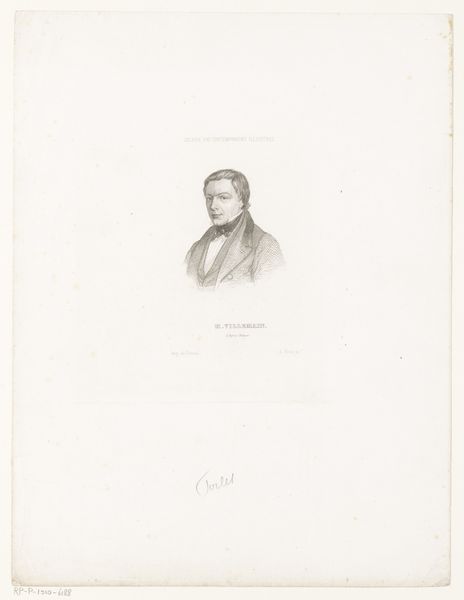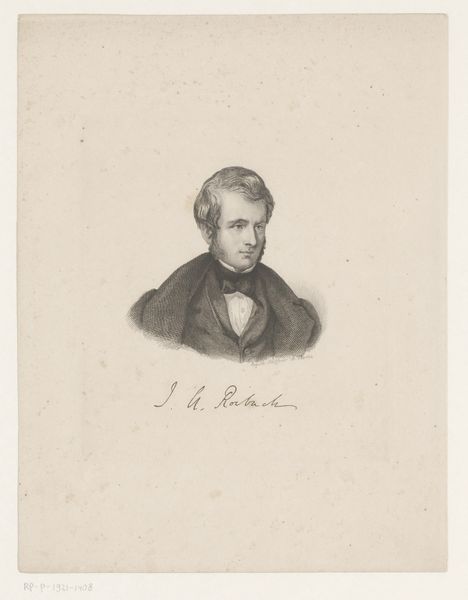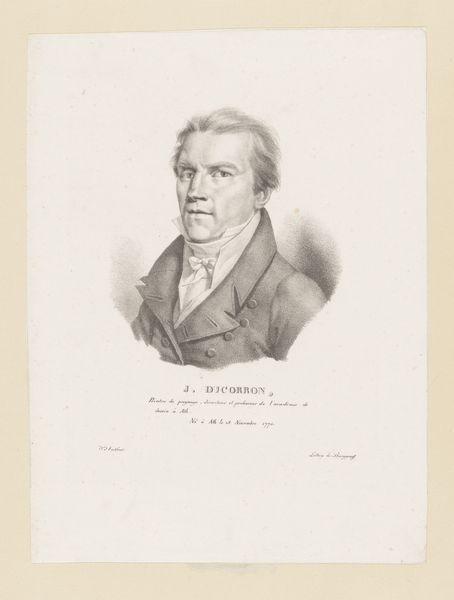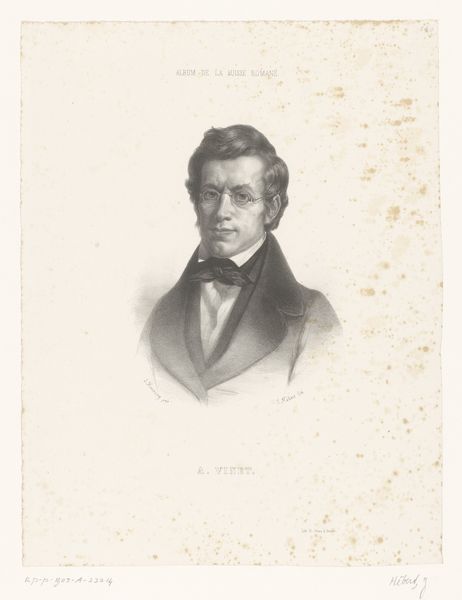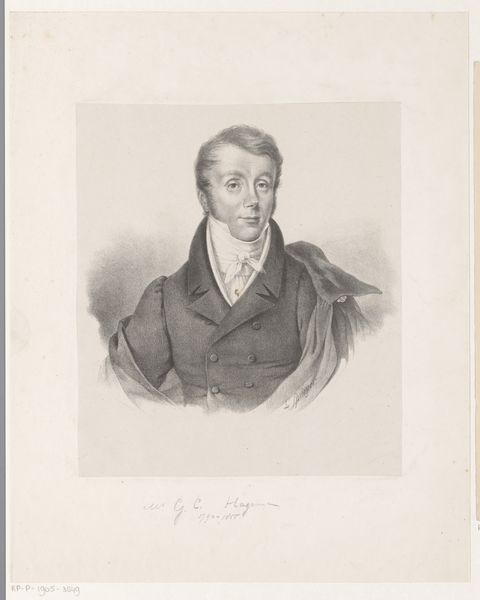
drawing, graphite
#
portrait
#
drawing
#
neoclacissism
#
graphite
Dimensions: height 253 mm, width 180 mm
Copyright: Rijks Museum: Open Domain
Editor: Here we have Jean Pierre Sudre’s 1818 graphite drawing, "Portret van Jean-Baptiste Collard," at the Rijksmuseum. What I notice first is how… earnest he looks. There's such formality in his expression, in the stark black and white. What stands out to you? Curator: The oval frame and clean lines signal Neoclassicism, calling back to ancient virtues. What meaning was attached to such stylistic restraint, do you think, during the upheavals following the French Revolution? It is fascinating how visual languages are resurrected and given renewed significance. Editor: So the Neoclassical style suggests stability, even aspiration, in a period of big social changes? But the man himself…his expression feels almost…modern in its simplicity. Curator: Precisely. The sharp graphite lines provide a raw honesty, contrasting against the idealized Neoclassical style. How does this contrast impact our perception of Collard? Editor: It makes him more relatable, somehow. Less a symbol, more a person, gazing at you. Curator: And who was he, this Collard? Does the portrait provide clues? Perhaps the clothes? It is intriguing how sitters’ portrayal shapes the audience’s understanding of identity and social roles through a deliberate set of visual codes. Editor: Good question. The buttoned coat implies someone respectable, bourgeois maybe? Curator: Exactly! Notice, too, how the overall composition pulls from Roman portraiture - perhaps he's striving for an elevated status. The choice of visual symbolism constructs powerful cultural associations and meanings around this image. Editor: I see! It’s interesting to think about the language of portraiture – a real blend of individual and type. Thank you for unpacking this portrait. Curator: Indeed, portraits always tell multiple stories.
Comments
No comments
Be the first to comment and join the conversation on the ultimate creative platform.
